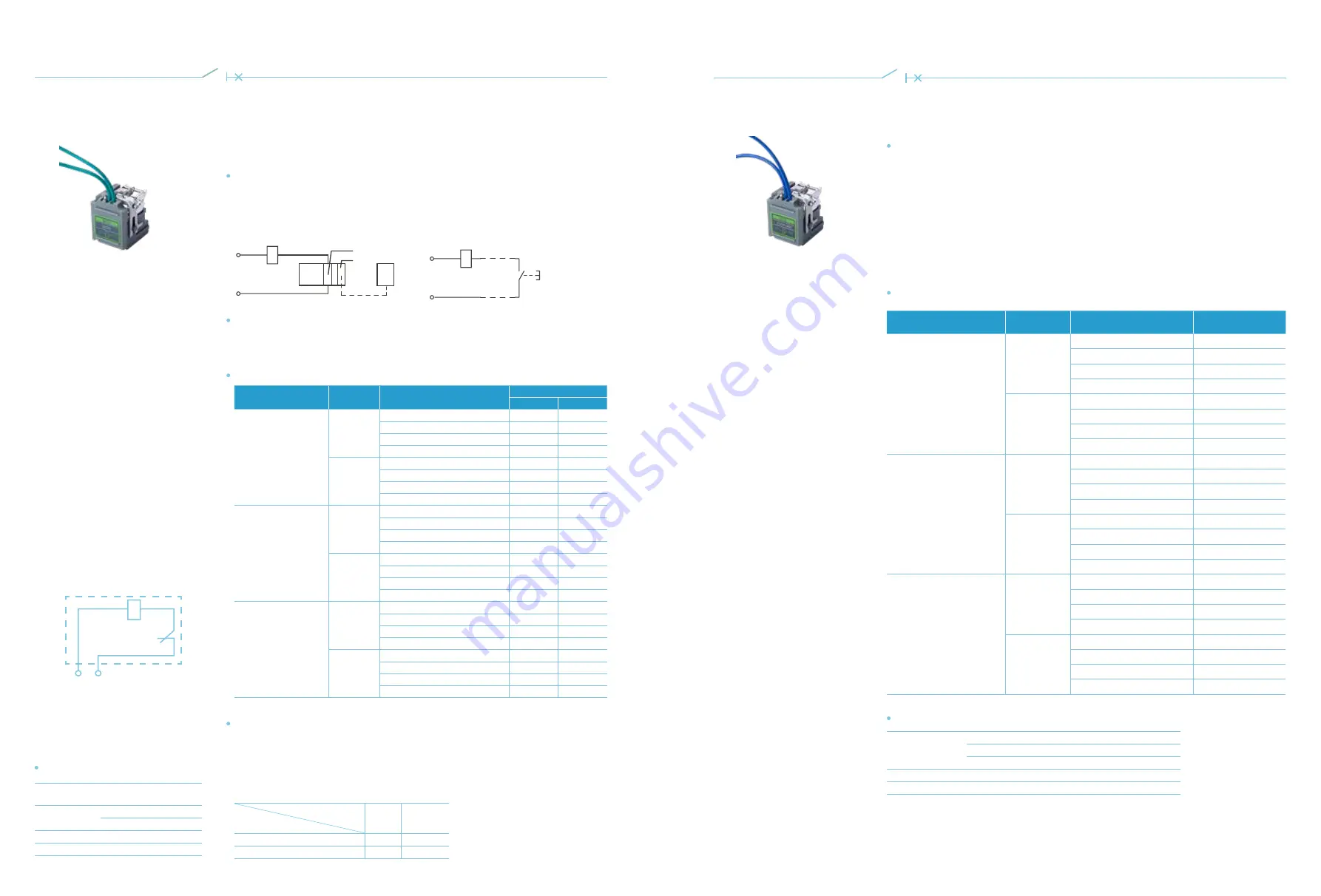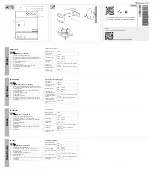
49
48
Accessories
Accessories
Shunt release (SHT)
Shunt release is an accessory for remote control of breaking. It can operate reliably when the
power supply voltage is within 70%-110% of rated control power supply voltage. Shunt release
operates based on telecommunication signal, providing remote control and automatic control of
circuit breaker.
Remote control
Shunt release
Shunt release
DO module
Communication module
PLC
Bus
Switch
Operation station
Power
Power
Automatic control
PLC control mode
Simple circuit control mode
Wiring diagram
Electrical characteristics
Operating characteristics
The operator inside the control room (or at a remote location) can send breaking command
to the circuit breaker, the controller (PLC) will receive the command through bus and activate
the corresponding terminal of DO module, so that the shunt release is energized for remote
release; user can also achieve remote control simply through the control circuit.
PLC can send breaking command based on the actual status and needs of the system and
activate the corresponding terminal of DO module, so that the shunt release is energized for
auto release.
K: Microswitch inside the shunt release which is connected with coil in series. It is a NC contact
which will disconnect automatically when the circuit breaker opens and connect automatically
when the circuit breaker closes.
If a shunt release with rated control power supply voltage of DC24V is used, the maximum length
of copper wire (each of the two wires) must comply with the requirements in the table below:
Reliable operating
voltage
70%~110% ×U
s
Power-on time
(Pulse type)
Minimum 10ms
Maximum
1s
Response time
30 ms
Operation times
1000
Cross-sectional area of the wire
Rated control power
supply voltage Us (DC24V)
1.5mm
2
2.5mm
2
100%U
s
150m
250m
85%U
s
100m
160m
Shunt release
(Circuit breaker internal
accessories in the dotted box)
Coil
A1
A2
Power input
K
Undervoltage release (UVT)
The undervoltage release provides undervoltage protection by disconnecting the circuit breaker when
power supply voltage is too low. It is a release that enables circuit breaker to disconnect without
any delay when the voltage falls into a certain range. The undervoltage release will operate and
disconnect the circuit breaker when the power supply voltage falls to (or slowly falls to) 70% - 35% of
rated control power supply voltage.
When the power supply voltage is not bigger than 35% of the rated control power supply voltage of
the release, the undervoltage release should be able to prevent the circuit breaker from closing; when
the power supply voltage is not smaller than 85% of the rated control power supply voltage of the
release, the undervoltage release should be able to guarantee the closing of the circuit breaker.
Function
Electrical characteristics
Operating characteristics
Operating
conditions (×U
s
)
Reliable breaking
35%~70%
Prevent from closing
≤35%
Reliable closing
≥85%
Response time
1s
Operation times
1000
Model
Voltage
type
Rated control power supply
voltage Us (V)
Power consumption (W)
Normal
Low consumption
SHT21/SHT21M
AC
48
55
2.2
110
94
2.2
220-240
325
2
380-415
152
2.5
DC
24
85
2.5
48
86
2.2
110-120
87
2.2
220
67
2
SHT22/SHT22M
SHT24/SHT24M
AC
48
51
2.3
110
228
2.5
220-240
427
2.2
380-415
255
2.5
DC
24
57
2.2
48
90
2.5
110-120
65
2.5
220
104
2.5
SHT26
AC
48
128
—
110
155
—
220-240
356
—
380-415
556
—
DC
24
230
—
48
135
—
110-120
156
—
220
398
—
Note:
See “Accessory model table” on P19 for matching circuit breakers.
Model
Voltage type
Rated control power supply
voltage Us (V)
Power consumption
(W)
UVT21
AC
48
1.6
110
2
220-240
2.4
380-415
2.4
DC
24
1.5
48
1.6
110-120
2
220
2.6
UVT22
UVT24
AC
48
1.2
110
1.7
220-240
2.8
380-415
2.8
DC
24
1.7
48
1.5
110-120
1.6
220
2.9
UVT26
AC
48
2.6
110
2.2
220-240
1.7
380-415
0.7
DC
24
2.8
48
2.5
110-120
2.2
220
1.8
Note:
See “Accessory model table” on P19 for matching circuit breakers.







































